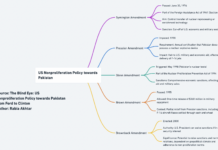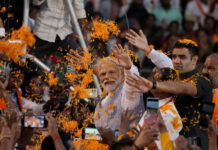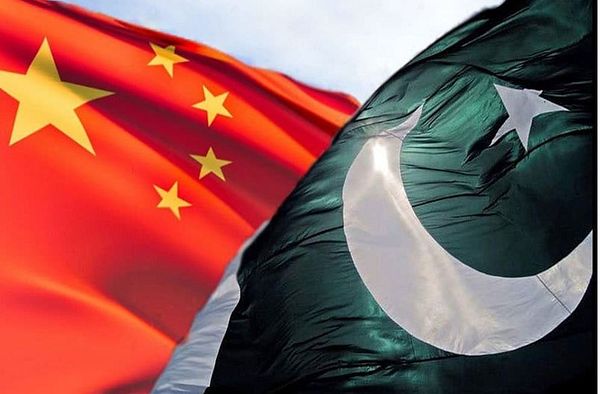Rabia Akhtar
The issue of strategic stability in South Asia is a trilemma between Pakistan, India, and China, not just a dilemma between India and Pakistan. Following its 2020 clashes with China in the Galwan valley, India raised the threat of a two-front war with much vigor, alleging that Pakistan and China will collude and collaborate to open two fronts of war with India, putting it in a disadvantageous position of fighting with limited arms and ammunition on both fronts. However, there is no evidence or basis for Pakistan and China to collaborate or collude to jointly defeat India. If such a strategy were in place, Pakistan would have benefited from it while India was distracted by China in Ladakh. However, Pakistan did not open a second front.
In January 2021, the-then Indian Chief of Army Staff, General Manoj Mukund Naravane, alluding to a two-front threat faced by India from China and Pakistan, said: “There is no doubt that Pakistan, China threat exists not just in theory, but very much on the ground. Their collusive approach against India poses a challenge.” This was but one of the very many statements speaking to India’s apprehensions about Pakistan’s growing bonhomie with China. This fear is also one of the reasons as to why India’s officialdom dovetails threatening messages to Pakistan with words of defiance for China. All this, it must be stated, is undergirded by New Delhi’s avowed discomfiture with Islamabad and Beijing taking the gigantic China-Pakistan Economic Corridor(CPEC) to the next level.
To India, CPEC is not a propellant of regional connectivity but a project that violates its sovereignty. Besides, India’s Prime Minister Narendra Modi, broaching concerns regarding CPEC with the Chinese leadership, as well as expressing support for the people of Balochistan, highlights how big an irritant the said project is for India. Thus, seemingly, Sino-Pak cooperation across a broad spectrum is seen with a great deal of skepticism by the Indian politico-military leadership. All this, if anything, has a number of implications for Pakistan, not least because the country’s burgeoning ties with China make India perturbed enough to effect a change in its approach. Three among them merit disquisitions and analyses.
First, owing to the fact that India believes Pakistan and China are hunting in pairs, it will try to sabotage their relations through a bevy of disruptive tactics. Since CPEC happens to be one of the manifestations of the Sino-Pak strategic relations, it is something that could make it an inveterate target of India’s sub conventional operations inside Pakistan. Here, it is important to mention that, through espionage and mendacious propaganda, India has, in the recent past, tried to hurt CPEC and Pakistan’s international image, respectively. Further, a degree of succor lent by India to proscribed secessionists in Balochistan has increased the complexities of security-related threats to not only CPEC but also Chinese citizens. Separatists have vowed to target installations, projects, and people linked to CPEC. The uptick in violence has not gone unnoticed, with China’s President Xi Jinping recently making a mention of rising threats to Chinese nationals working in Pakistan. Now, with both China and Pakistan committed to augmenting CPEC’s security against a host of threats, it is reasonable to argue that India’s views about a Sino-Pak collusion will all but harden. Resultantly, one could expect New Delhi to ramp up its tirade against CPEC. Doing so might resonate well with the recently-released U.S.National Security Strategy, which strongly commits the U.S. to bolstering alliances and partnerships to stop China’s bid to rewrite the rules of the road. Thus, it would be imprudent to rule out the possibility of CPEC making all the wrong headlines and, in the process, becoming a cause of many a diplomatic row between Islamabad, New Delhi, and Washington.
Second, the very two-front war concerns within the Indian policy circles may push India to flirt with danger when it comes to dealing with Pakistan. Speaking elsewhere, I argued that India might try to exact Surrogate Deterrence in the region. In other words, because of India’s sheer inability to directly deter China, it could use kinetic means against Pakistan for deterrence signaling against the former. With India’s acquisition of Rafale jets, India can engineer a scenario in which they will be used against Pakistan in a surgical strike, a sort of Balakot 2.0, to test their battlefield utility. Given the sheer asymmetry of forces between India and China, and India’s non-performance against China in Ladakh, it is all but certain that India will avoid engaging in direct hostilities with China. The opposite, however, is true for Pakistan, with which it has already established a precedent through the Balakot strikes in the trend of surgical strikes. This line of thinking is not far-fetched, especially because the imbalance of resolve between China and India, as evidenced by New Delhi’s crisis behavior in Ladakh, could translate into deleterious reputational costs for the latter. Therefore, not only to reduce those but also to achieve deterrence signaling vis-à-vis China, India could take punitive measures against Pakistan. For India, this could be one way through which it could hope to deter, to a degree, escalation from the Chinese side. Here, it is noteworthy that, for India, signaling to the U.S. its resolve to fight on one of the two fronts is critical. This is primarily because India could, by doing so, not only overplay the threat from China but also portray Pakistan as part of the problem. Also, coming across as a country not being able and willing to take on both of its adversaries is not an option for India. In fact, it would dent India’s credentials as one of the ace bulwarks against a preponderant China. Additionally, by aggressing against Pakistan, India might like to showcase its commitment to overcoming its strategic paralysis against that country while also demonstrating that it could jeopardize Chinese interests in the region.
Third, the paranoia surrounding Sino-Pak engagements in the economic and military realms will permeate several domains. India’s dual-deterrence predicament will accentuate as a result of a feeling that both China and Pakistan are enhancing their interoperability at various levels of war. India’s trepidations notwithstanding, it is faced with a veritable paradox: what is minimum for Pakistan cannot be credible for China, and what is credible for China cannot be minimum for Pakistan. This problem will exacerbate going forward, primarily because India would have to recalibrate and reframe what minimum and credible mean in the context of its nuclear postures vis-à-vis its two nemeses. This set of tensions may lead to changes in India’s nuclear doctrine going forward. Therefore, it might be useful to analyze growing concerns about the utility of India’s No-First Use (NFU) policy against this backdrop. Threatening to do away with its NFU policy, coupled with its nuclear-related developments, to include the canisterization of shorter-range delivery vehicles, all but indicates that India is not comfortable with the current state of play. Therefore, it wants to generate more strategic options to coerce its enemies. By virtue of finding itself at the tail end of the strategic chain, Pakistan, obviously, cannot remain impervious to all this, which, one must add, will further weaken the even otherwise tenuous state of strategic stability in the region. There will be another corollary of all these phenomena: Sino-U.S. rivalry, Indo-U.S. strategic partnership, and Sino-Pak ever-increasing avenues of cooperation will be affected by each other. India could make Sino-Pak relations a rallying cry, with a view to extracting more military support from the U.S. Moreover, if India were to stick to its two-front war refrain, there are chances that it could, once again, ask the U.S. to help it tackle Pakistan. This, by all means, will mar Islamabad’s ability to strike a balance in its ties with Washington and Beijing. However, that all this is unlikely to harm Islamabad’s bid to solidify links with Beijing means that New Delhi’s strategic uneasiness could increase. Regardless of the kinds and types of interactions between Pakistan and China, India will feel it is losing and being encircled. Other than being a bane for regional connectivity and integrity, this zero-sum game will add to the very many crisis-triggers in South Asia.
Throw into these already complex dynamics against the backdrop of the trilemma in Southern Asia, the advent of emerging technologies and countries trying to gain an edge with acquiring the most disruptive systems. Is there a new type of threat to Pakistan’s national security posed by disruptive technologies in the gray zones dominated by digital soldiers, for example? Yes. Are they asymmetric in nature but have strategic implications? Yes. Then Pakistan must reconsider its deterrence strategy in the cyber-age, in the age of disruptive technologies, bordering a country like India, which has repeatedly demonstrated its ability to use fake news to incite new forms of nationalism to achieve political and strategic objectives. There is every chance of India projecting a collusive approach from Pakistan and China in a future crisis, where none exists, through disinformation using the social media domain. Given the great power rivalry in the Indo-Pacific region, this type of crying wolf can gain India further strategic advantages from the U.S. and allies.
While the three countries continue to nurse their strategic dilemmas, it is unfortunate that common threats like climate change will remain unaddressed for the foreseeable future because potential win-win scenarios are not being perceived as such by the three countries. In India’s case in particular, however, the strategic anxiety may attenuate the prospect of economic integration and regional connectivity, which Pakistan and China are trying to pursue in the region.
Dr. Rabia Akhtar is Editor, Pakistan Politico.

















